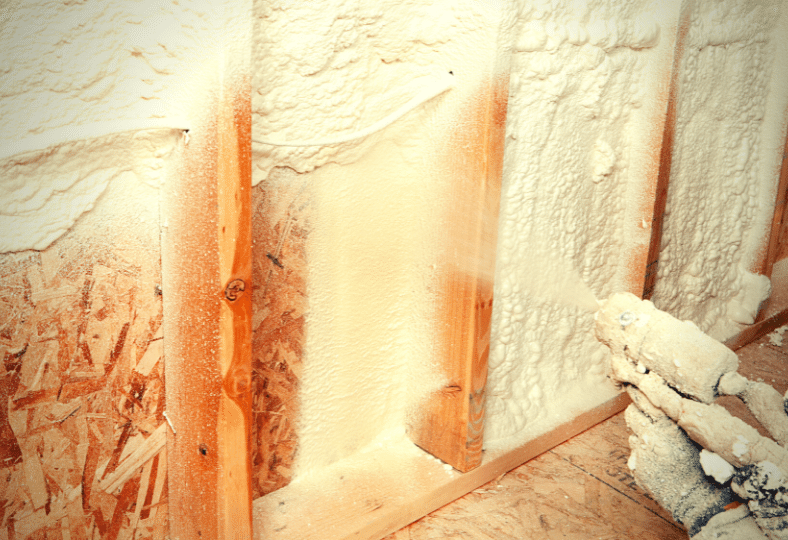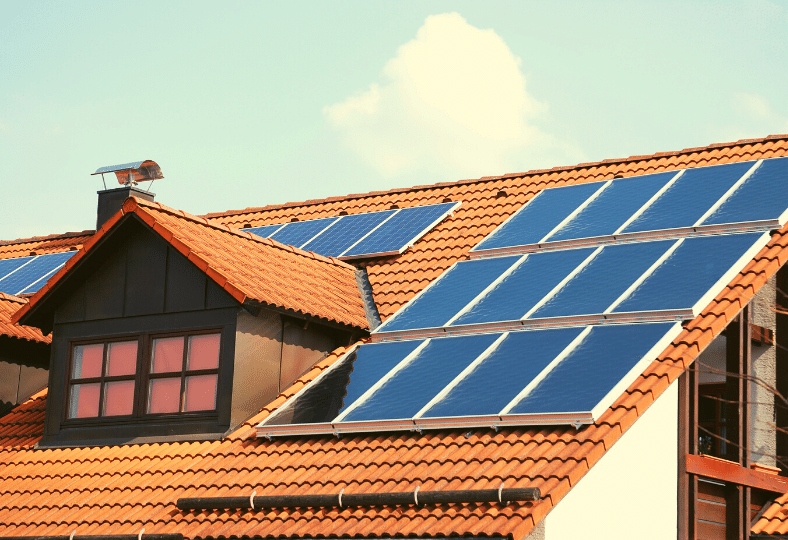
As homeowners are more concerned about sustainability and living an environmentally-friendly lifestyle, energy-efficient homes are becoming increasingly popular.
There are key design elements you need to make your home truly green, whether you are looking to build from scratch, renovate an existing home, or purchase a home that is already energy-efficient.
Let’s take a look at these.
What Makes A Home Energy-Efficient?
Energy-efficient means that you use less energy to produce the same product. It can also be used to refer to any action that conserves or saves energy.
A home that is energy efficient uses less energy but still provides the same level of comfort and aesthetic appeal as a traditional house.
One simple way to improve energy efficiency in your home is to switch out traditional light bulbs with compact fluorescent or light-emitting device (LED) bulbs. Both bulbs emit light but the LED and compact fluorescent bulbs use less energy.
Design Tips For Building Energy-Efficient Homes
When defining the features of a home, terms like “green”, “sustainable” or “energy-efficient”, aren’t just used interchangeably. Here are some common points to remember if you’re looking to buy or build a home or increase its value by adding energy-efficient features.
1. Make Sure You Use The Right Building Materials
You can make your home more energy-efficient by choosing to use sustainable building materials such as reclaimed timber in construction and repair.
There are also building materials that can improve the efficiency of a home, such as:
- Recycled steel
- Spray foam insulation for non-fiberglass
- Concrete
- Bamboo
- Eco-friendly paint
- Installing a new roof
When you are building a home or renovating an existing one, it is important to consider how less waste can be generated by using sustainable materials in the design. This will not only increase the property’s energy efficiency but also reduce the waste that ends up in landfills and incinerators.
2. Insulation Is Key

Look at the walls, windows, doors, attic, and attic of your house. Is the house properly sealed and insulated? Or is air slowly leaking through cracks that are not visible?
Insulation for your home is a way to keep it warm in the winter and cool in the summer while reducing the need for your cooling or heating system to work overtime.
Window panes offer energy efficiency that is often overlooked. You can add insulation and security to your house by installing windows with two- or three panes.
When you are building a new home, be sure to inspect the insulation and building seal of the ceilings, walls, and floors. You will need to add more insulation than required by building codes to be truly efficient.
3. Purchase Efficient Appliances And Utilities
High energy bills could be due to your appliances. But energy-efficient appliances can help. Energy Star appliances offer energy savings and have contributed to a reduction of 3.5 billion metric tons in greenhouse gas emissions since 1992.
You should also inspect your heating, ventilation, and air conditioning (HVAC), systems. Leakage can result in thousands of dollars annually in energy losses. You can also save significant money by switching to low-energy systems such as LED bulbs, low-flow fixtures, and toilets.
4. You Might Consider Integrating A ‘Smart Home System’
Smart home upgrades not only can make your house easier to use but can also help you save money on your energy bills. These are some of the most popular upgrades:
- Hubs for home
- Smart lighting systems
- Energy meters
- Smart thermostats
- Smart security systems
Smart home devices can learn about your preferences and habits, and then suggest energy savings based on what you need and how much you want to save.
5. Solar Power
Are you starting a new building? To maximize the sun’s natural heat, place your windows strategically. You’ll be able to heat your home more effectively in winter if you have a lot of windows facing south. Covering the windows with a shade will help keep your house cool in summer.
Solar panels are expensive but have a high ROI (return on investment) and can help you save money depending on where you live. You may be able to get additional energy from your solar panels from some electric companies.
Solar panels can affect your mortgage so be sure to speak with your lender before you install solar panels in your home.

6. Strive for An Efficiency-Certified House
LEED certification can be a selling point for homes that are energy efficient in certain cases. The U.S. Green Building Council (USGBC) has given LEED certification to homes that meet certain environmental standards.
To speak to a USGBC representative about your home, and to determine if your home meets the requirements for LEED qualification, or if your building is just beginning, you might consider using the guidelines to guide your design.
7. Take Into Consideration Your Climate And Location
Know your local energy requirements before you start a project to remodel your home or build a new one. For example, if you live in a warm climate, insulation might not be necessary. You might find more efficient ways to spend that money in the long-term to increase efficiency.
There are many ways to make your landscaping more energy-efficient, depending on where you live.
Bottom line: A home That Is Energy Efficient Is A Win-Win Situation
It is important to know what to look out for when building, buying, or selling an efficient home. This will help you live a more sustainable lifestyle.
You can feel good about making conscious decisions to reduce your environmental impact and save money on your energy bills. It’s a win/win situation!
